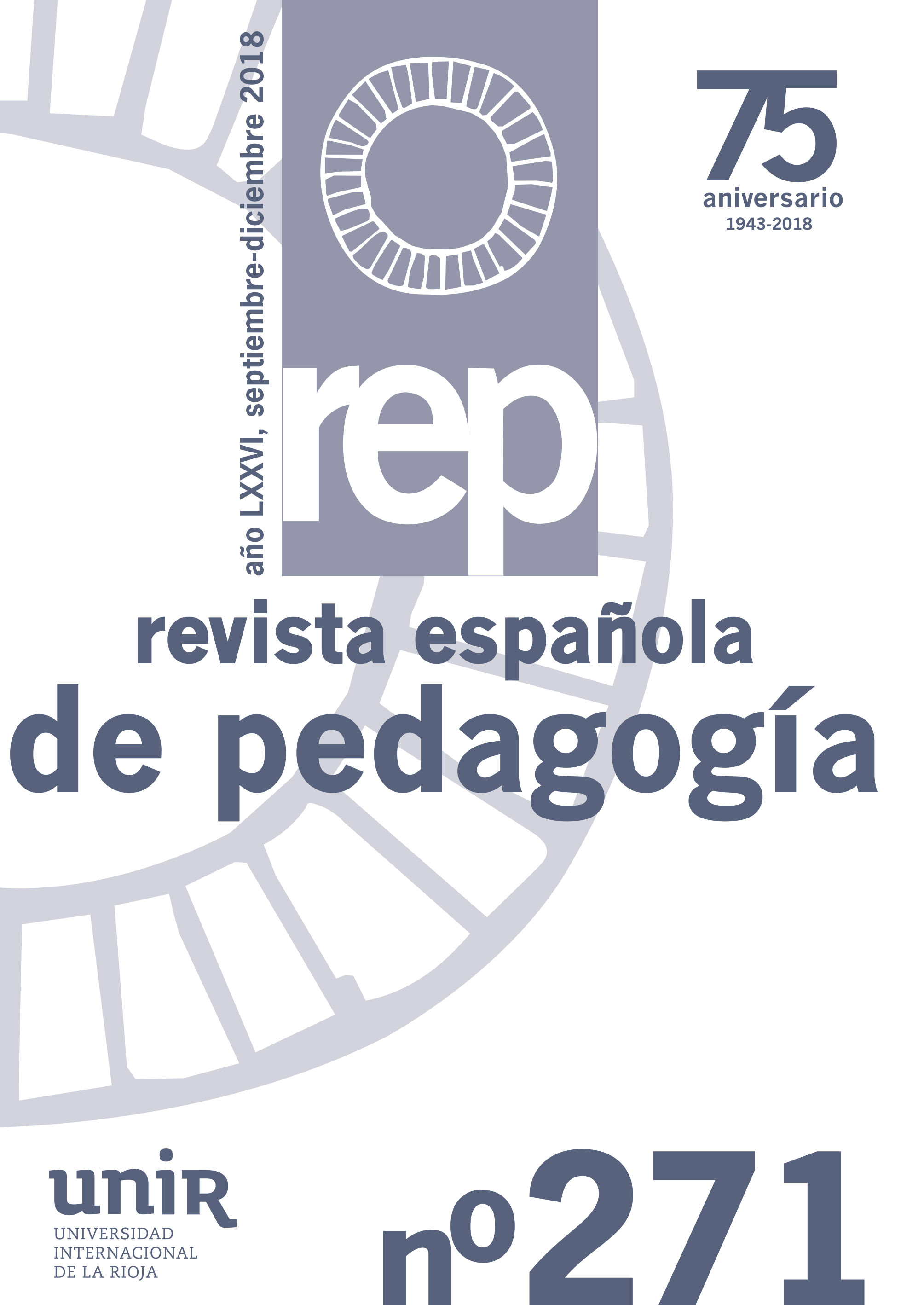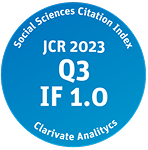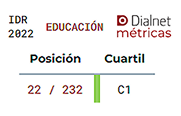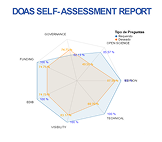American Journal of Education: retos y oportunidades en las ciencias translacionales y la zona gris de la publicación académica
DOI:
https://doi.org/10.22550/REP76-3-2018-01Palabras clave:
cienciastranslacionales, educación, innovación, publicaciónacadémica, redessocialesResumen
American Journal of Education (AJE) es una de las once revistas más importantes en el campo de la educación y publica nuevos trabajos de investigación en un amplio espectro de disciplinas educativas. Con sede en la Pennsylvania State University, la revista trabaja con editores asociados de toda la nación y con un consejo asesor de académicos sénior. También cuenta con un foro online (AJE Forum) gestionado por el consejo editorial estudiantil. El mayor problema que afronta la revista es cómo difundir eficazmente la investigación revisada por pares para que llegue a un público amplio, incluidos gestores, responsables políticos, reformadores y educadores. Dadas las limitaciones de los recursos universitarios, la revista ha explorado nuevas vías para difundir información sobre sus artículos a través de las redes sociales, y continúa evaluando la mejor forma de analizar el impacto de los artículos publicados en contextos académicos y políticos.
Cómo citar este artículo: LeTendre, G., McGinnis, E., Mitra, D., Montgomery, R. y Pendola, A. (2018). American Journal of Education: retos y oportunidades en las ciencias translacionales y la zona gris de la publicación académica | The American Journal of Education: challenges and opportunities in translational science and the grey area of academic. Revista Española de Pedagogía, 76 (271), 413-435. doi: 10.22550/REP76-3-2018-01
Descargas
Citas
Altbach, P. (2007). The Imperial Tongue: English as the Dominating Academic Language. Economic and Political Weekly, 42 (36), 3608-3611.
Boyd, W. L. (2004). Relaunching the American Journal of Education in «Interesting Times». American Journal of Education, 110 (2), 105-107.
Case, M. M. (2005). A snapshot in time: ARL libraries and electronic journal resources. Journal of Library Administration, 42 (2), 87-105. doi: 10.1300/J111v42n02_07
Castells, M. (2004). Informationalism, Networks, and the Network Society: A Theoretical Blueprint. En M. Castells (Ed.), The Network Society: A Crosscultural Perspective (pp. 3-48). Reino Unido: Edward Elgar.
Cerecer, P. (2013). The Policing of Native Bodies and Minds: Perspectives on Schooling from American Indian Youth. American Journal of Education, 119 (4), 591-616.
COPE (2018). Promoting integrity in research and its publication. Eastleigh, Reino Unido: página de inicio. Recuperado de https://publicationethics.org/ (Consultado el 19-06-18).
COPE (9 de noviembre de 2016). Manual of conduct for editors. Recuperado de https://publicationethics.org/files/Full%20set%20of%20English%20flowcharts_9Nov2016.pdf (Consultado el 19-06-18).
Cosco, T. D. (2015). Medical journals, impact and social media: An ecological study of the twittersphere. CMAJ: Canadian Medical Association Journal [Journal De l’Association Medicale Canadienne], 187 (18), 1353. doi: 10.1503/cmaj.150976
Dewey, J. (1896). Influence of High School upon Educational Methods. School Review, 4 (1), 1-11.
Evans, P. y Krauthammer, M. (2011). Exploring the use of social media to measure journal article impact. AMIA Annual Symposium Proceedings Archive, 374-381. Recuperado de https://www.ncbi.nlm.nih.gov/pmc/articles/PMC3243242/ (Consultado el 19-06-18).
Eck, N. J. Van y Waltman, L. (2014). Visualizing bibliometric networks. En Y. Ding, R. Rousseau y D. Wolfram (Eds.), Measuring scholarly impact: Methods and practice (pp. 285-320). Berlín: Springer.
Eysenbach, G. (2011). Can tweets predict citations? Metrics of social impact based on twitter and correlation with traditional metrics of scientific impact. Journal of Medical Internet Research, 13 (4), e123. doi: 10.2196/jmir.2012
Eysenbach, G. (2012). Correction: Can tweets predict citations? Metrics of social impact based on twitter and correlation with traditional metrics of scientific impact. Journal of Medical Internet Research, 14 (1), e7.
Garfield, E. (2006). The History and Meaning of the Journal Impact Factor. JAMA, 295 (1), 90-93.
Goddard, Y. y Goddard, R. (2015). School Instructional Climate and Student Achievement: An Examination of Group Norms for Differentiated Instruction. American Journal of Education, 122 (1), 111-131.
Goodyear, R. K., Brewer, D. J., Gallagher, K. S., Tracey, T. J., Claiborn, C. D., Lichtenberg, J. W. y Wampold, B. E. (2009). The intellectual foundations of education: Core journals and their impacts on scholarship and practice. Educational Researcher, 38 (9), 700-706.
LaPoe, J. L. (1927). The Senior High-School Principals’ Professional Magazines. Educational Research Bulletin, 6, 259-61.
Moolenaar, N. M. (2012). A social network perspective on teacher collaboration in schools: Theory, methodology, and applications. American Journal of Education, 119 (1), 7-39.
Schwartz, S. (diciembre, 2014). American Journal of Education Receives Top Rankings. College of Education, Penn State University: News and publications. Recuperado de https://ed.psu.edu/news/news-oct-dec-2014/AJE (Consultado el 19-06-18).
Scimago (2018). Scimago Journal & Country Rank. Recuperado de https://www.scimagojr.com/journalrank.php?area=3300&category=3304 (Consultado el 19-06-18).
Sebire, N. J. (2008). H-index and Impact Factors: Assessing the Clinical Impact of Researchers and Specialist Journals. Ultrasound in Obstetrics and Gynecology, 32 (7), 843-845. doi: 10.1002/uog.6266
Smart, J. y Elton, C. (1981). Characteristics and Citation Rates of Education Journals. American Education Research Journal, 18 (4), 399-413.
Spillane, J. P., Hopkins, M. y Sweet, T. M. (2015). Intra-and interschool interactions about instruction: Exploring the conditions for social capital development. American Journal of Education, 122 (1), 71-110.
Supovitz, J. (2017). Social Media is the New Player in the Politics of Education. Phi Delta Kappan, 99 (3).
University of Chicago Press (2013). Circulation and Marketing Report for the American Journal of Education. Chicago: University of Chicago Press Journals Division.
University of Chicago Press (2018). Publisher’s Report for the American Journal of Education. Chicago: University of Chicago Press Journals Division.
Wechsler, H. (1979). The Primary Journal for Secondary Education, 1893-1938: Part I of a History of School Review. American Journal of Education, 88 (1), 83-106. Recuperado de http://www.jstor.org/stable/1085277 (Consultado el 19-06-18).
Wechsler, H. (1980). From Practice to Theory: A History of School Review, Part II. American Journal of Education, 88 (2), 216-244. Recuperado de http://www.jstor.org/stable/1085306 (consultado el 19-06-18).
Descargas
Publicado
-
Resumen273
-
PDF21
-
PDF (English)18
Cómo citar
Número
Sección
Licencia

Esta obra está bajo una licencia internacional Creative Commons Atribución-NoComercial 4.0.

